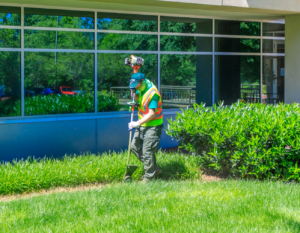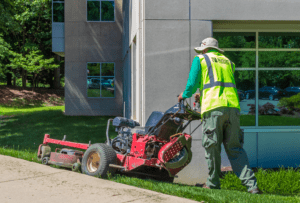 By Rachel Kelly, Director of Quality and Efficiency, Landscape Management Division
By Rachel Kelly, Director of Quality and Efficiency, Landscape Management Division
People are creatures of habit. We find comfort in following the same routines because we are freed from making lots of small decisions and able to focus our mental energies on more important tasks.
Take my morning routine for example: When I am home, I wake up every morning, wash my face and brush my teeth. Then I make my bed, put on my Ruppert uniform, walk and feed the dog, grab breakfast and drive to the branch. When I am on the road, this routine varies only in that I don’t have to walk the dog and I rely on the closest Starbucks for breakfast. The overall process has certain steps that must happen: brush teeth (I hate morning breath), wash face, get dressed, drive to branch. There are steps that are dependent on where I am located: whether or not I care for the dog, what I eat for breakfast and the length of the drive to the branch. Whenever possible, I stay at the same hotel, in the same room and follow the same route to the branch. This means I don’t have to think about where I am going to get breakfast or rely on GPS on my drive to the branch. This frees me up to think about how I am going to spend my day with the team. Following these routines provides structure to my day, enables me to focus on my job and ultimately, deliver better support to the branches.
The same thing happens when we follow routines in the field. In maintenance, when we think about how to produce work, we think about the Order of Operations:
 Details First. This is our opportunity to ensure that customer priorities are not rushed at the end. It is important to know what is truly important to the customer. Don’t just assume! Details vary from property to property, but typically include:
Details First. This is our opportunity to ensure that customer priorities are not rushed at the end. It is important to know what is truly important to the customer. Don’t just assume! Details vary from property to property, but typically include:
- Weed control
- Pruning
- Floriculture maintenance
- Pre-blowing gutters (if necessary)
- Trash/debris removal
- Hard Edge. Be sure you know the contract and the frequency of edgings. The edger leads the way! There is one optimal way to edge the property. Once that is determined, all other tasks follow the flow of the edger. This keeps everyone going in the same direction, creating consistent flow and giving Field Managers increased control over the job.
 Mow. Keep the grass in the grass! Blowing time is greatly reduced when the mower chases the edger by returning debris back to the turf and keeping the chute towards the grass. It is most productive to send the larger mowers out first and have the smaller mowers follow and cut what the larger mowers can’t reach. Make sure we have the correct mower size. Forcing a larger mower on a small turf panel is a recipe for safety, quality and productivity issues.
Mow. Keep the grass in the grass! Blowing time is greatly reduced when the mower chases the edger by returning debris back to the turf and keeping the chute towards the grass. It is most productive to send the larger mowers out first and have the smaller mowers follow and cut what the larger mowers can’t reach. Make sure we have the correct mower size. Forcing a larger mower on a small turf panel is a recipe for safety, quality and productivity issues.- Weedeat. Weedeating often increases safety risks, decreases the quality of the cut and is incredibly unproductive. Whenever possible, eliminate weedeating by modifying mulch beds, spraying out fence lines and ensuring we have the right size mowers on the turf.
- Blow. If we’ve been mulching pruning clippings whenever possible, edging before mowing and “keeping the grass in the grass,” blowing should be a piece of cake!
While this exact list may not apply to our landscape construction division, the principles still apply. When the correct order of operations becomes a habit, we have a team that is flowing smoothly and firing on all cylinders, freeing up our best asset – our minds.
 By Rachel Kelly, Director of Quality and Efficiency, Landscape Management Division
By Rachel Kelly, Director of Quality and Efficiency, Landscape Management Division Details First. This is our opportunity to ensure that customer priorities are not rushed at the end. It is important to know what is truly important to the customer. Don’t just assume! Details vary from property to property, but typically include:
Details First. This is our opportunity to ensure that customer priorities are not rushed at the end. It is important to know what is truly important to the customer. Don’t just assume! Details vary from property to property, but typically include:
 Mow. Keep the grass in the grass! Blowing time is greatly reduced when the mower chases the edger by returning debris back to the turf and keeping the chute towards the grass. It is most productive to send the larger mowers out first and have the smaller mowers follow and cut what the larger mowers can’t reach. Make sure we have the correct mower size. Forcing a larger mower on a small turf panel is a recipe for safety, quality and productivity issues.
Mow. Keep the grass in the grass! Blowing time is greatly reduced when the mower chases the edger by returning debris back to the turf and keeping the chute towards the grass. It is most productive to send the larger mowers out first and have the smaller mowers follow and cut what the larger mowers can’t reach. Make sure we have the correct mower size. Forcing a larger mower on a small turf panel is a recipe for safety, quality and productivity issues.